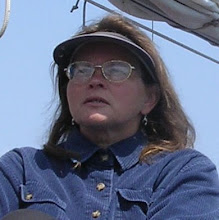A number of our SKS members attended the Village council meeting last night. It was great to have a member of the Grand Manan Rotary Club speak to council about their international project with the Seminole Rotary Club in Florida. Up to 24 members are planning to come to Grand Manan in September and spend a day and a half working on the buildings at Swallowtail.
We were also pleased to see that the village now has a historic building register which will be beneficial if the older lighthouses can be designated historic and thus fall under the federal Historic Lighthouse Bill. This bill will give the Canadian Coast Guard (CCG) a budget to maintain these historic lighthouses. Actual money directed to maintaining these structures has not been in the CCG budget previously and with budget cuts, maintenance of buildings has been a struggle, so much so that it was the local Rotary Club who raised the money to paint Swallowtail Light.
The Memorandum of Understanding, drafted by our solicitor and discussed at length with a committee of council, has moved a step forward. A motion was made to have it sent to the solicitor for the Village for his opinion. We are hoping for a positive response within 30 days.
It was reassuring and a constant reminder throughout the council meeting, which took place in the North Head hall, that the foghorn at Swallowtail could be heard reverberating through the walls. A thick fog had formed in the afternoon as the temperature rose above freezing and the humidity level rose with melting snow and continued into the evening.
All in all Groundhog Day was a good day on the 33rd anniversary of a severe gale that did a lot of damage to the wharves and shore buildings on Grand Manan, including washing vehicles off the wharf at Ingalls Head and floating shore buildings out to sea. The decommissioned lighthouse on Ross Island, Fish Fluke Point or Grand Harbour Light, was also severely damaged but it is a testament to the strength of construction of the old wooden lighthouses that even today, the main tower is still standing, although most of the structure around it has completely collapsed. A number of the small wharves including the one at Whale Cove and Castalia were damaged so severely they were never rebuilt. A concrete ramp was installed at Whale Cove and the only thing that remains of the wooden wharf are the anchor rocks, large boulders that formed the interior of the wooden wharf and now form a rock breakwater.
The Groundhog Day gale was one of those superstorms, a combination of a number of systems, combined with high tides, and did major damage along the New England coast and Atlantic Canada. Because of the combination of the storm and the tides in the Bay of Fundy, the effects were devastating and the damage was estimated in the tens of millions of dollars.
Subscribe to:
Post Comments (Atom)

No comments:
Post a Comment